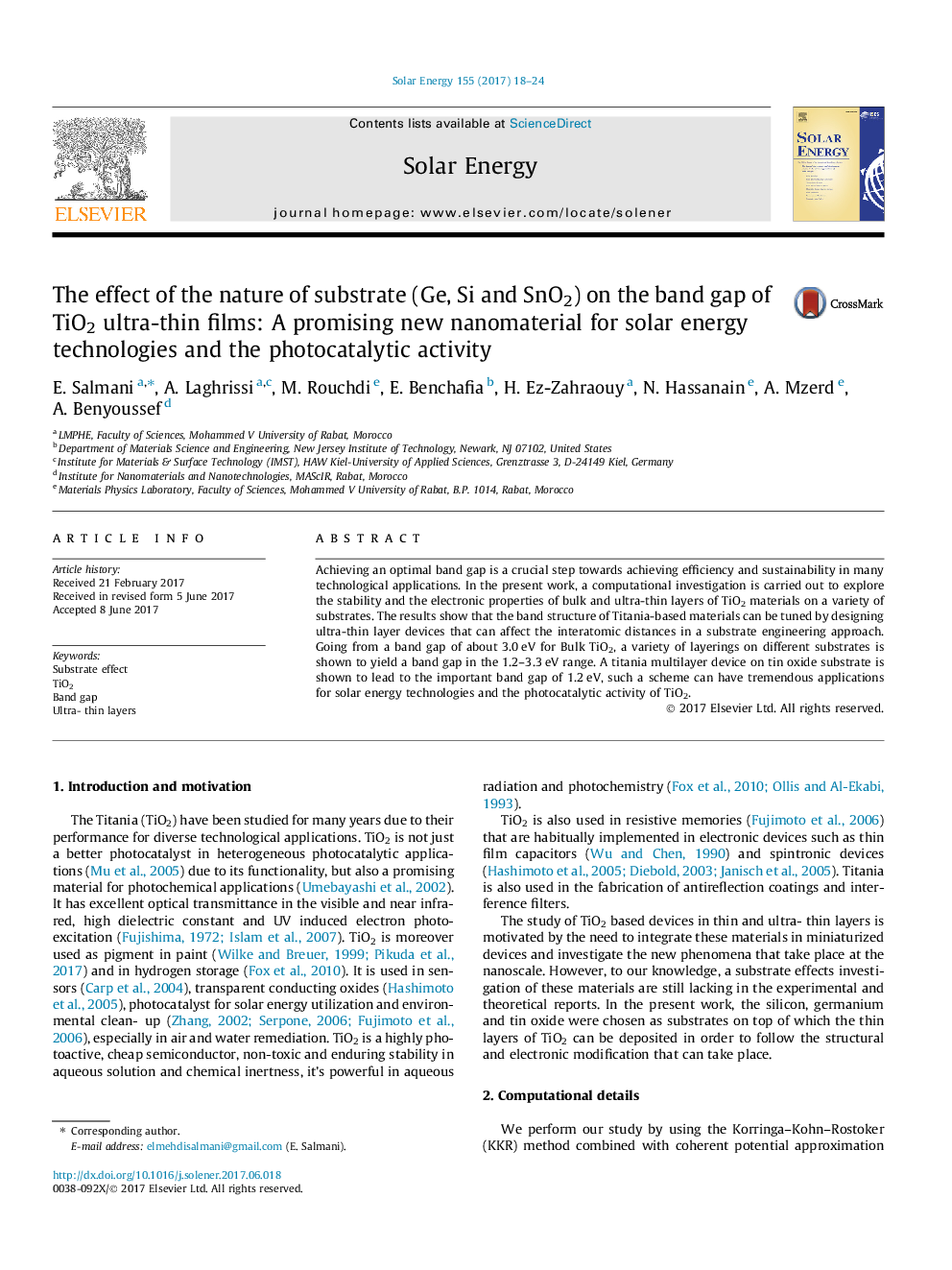| Article ID | Journal | Published Year | Pages | File Type |
|---|---|---|---|---|
| 5450598 | Solar Energy | 2017 | 7 Pages |
Abstract
Achieving an optimal band gap is a crucial step towards achieving efficiency and sustainability in many technological applications. In the present work, a computational investigation is carried out to explore the stability and the electronic properties of bulk and ultra-thin layers of TiO2 materials on a variety of substrates. The results show that the band structure of Titania-based materials can be tuned by designing ultra-thin layer devices that can affect the interatomic distances in a substrate engineering approach. Going from a band gap of about 3.0Â eV for Bulk TiO2, a variety of layerings on different substrates is shown to yield a band gap in the 1.2-3.3Â eV range. A titania multilayer device on tin oxide substrate is shown to lead to the important band gap of 1.2Â eV, such a scheme can have tremendous applications for solar energy technologies and the photocatalytic activity of TiO2.
Keywords
Related Topics
Physical Sciences and Engineering
Energy
Renewable Energy, Sustainability and the Environment
Authors
E. Salmani, A. Laghrissi, M. Rouchdi, E. Benchafia, H. Ez-Zahraouy, N. Hassanain, A. Mzerd, A. Benyoussef,
